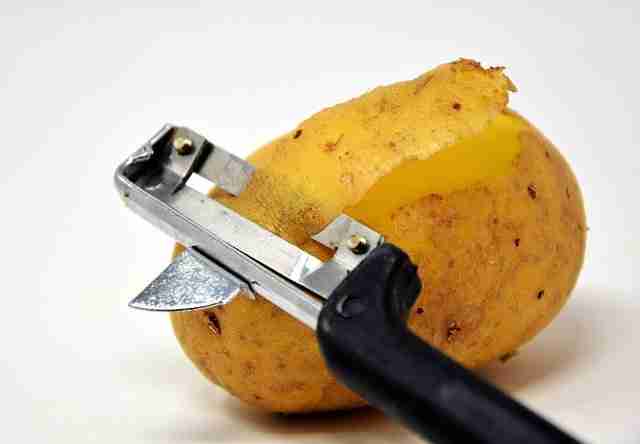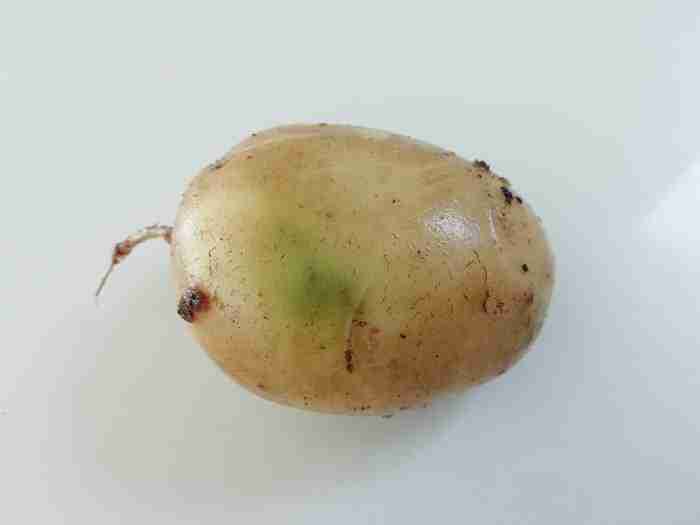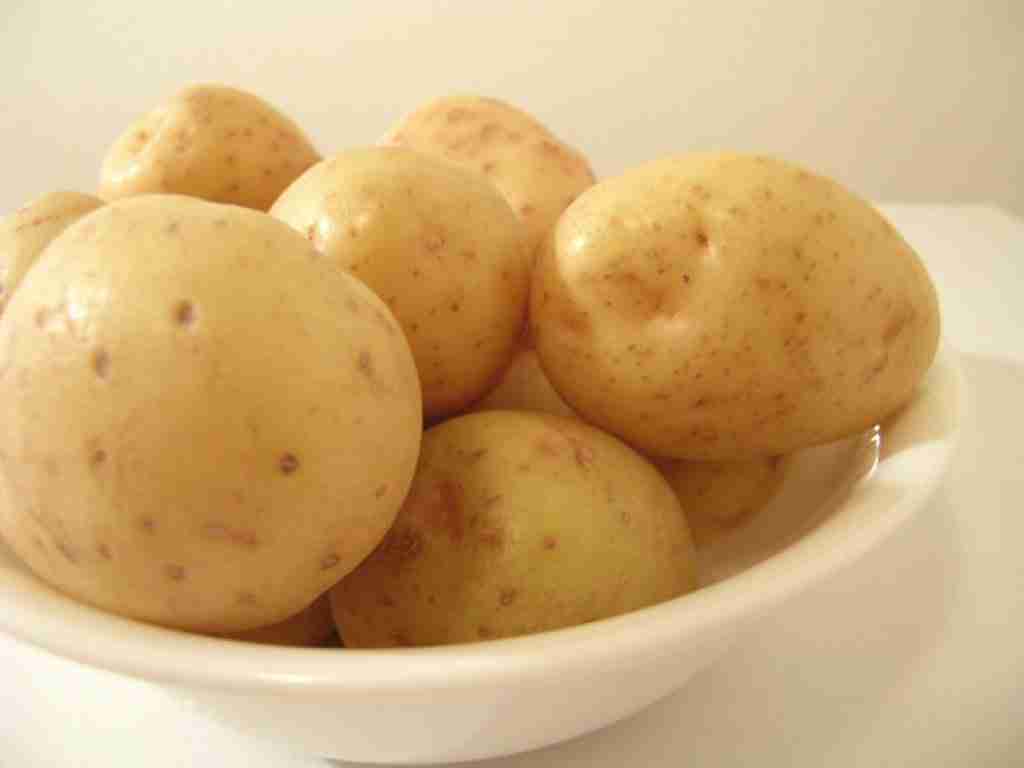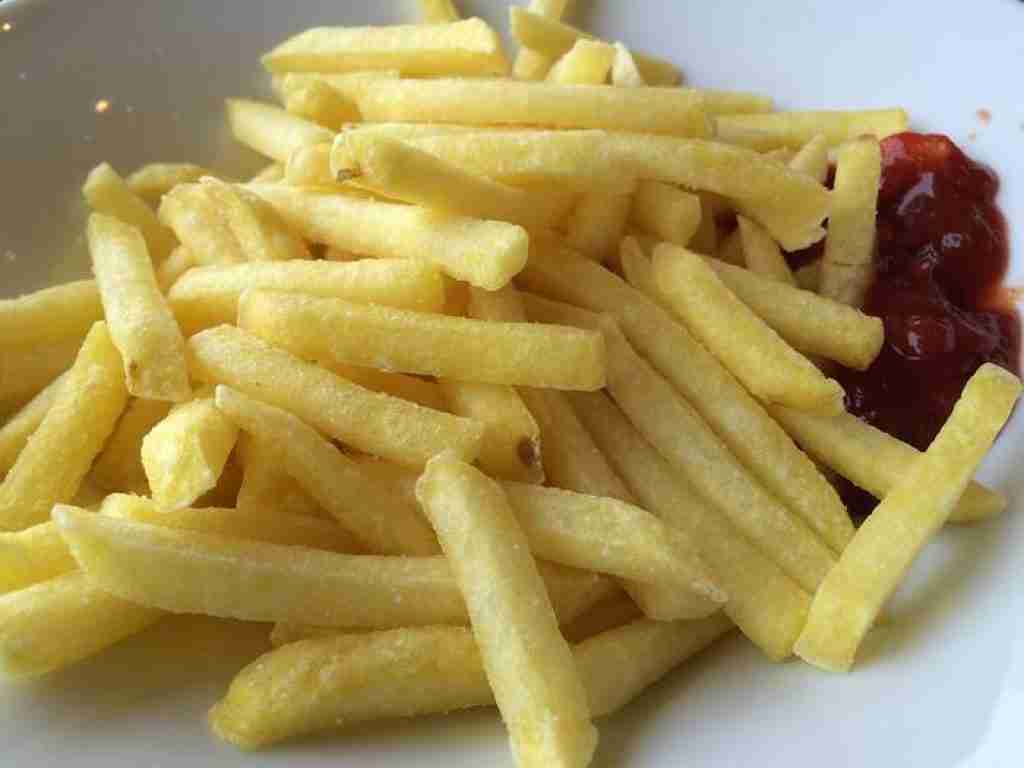Eaten by cultures the world over, potatoes are a staple in most diets. They provide a plethora of important nutrients. Fiber, magnesium, potassium, and vitamins such as C and B6 with a relatively low caloric content. Their complex carbohydrates provide plenty of slow-burning fuel for your body. But are potatoes as beneficial to our canine companions as they are to us? And more specifically can dogs eat potato skins?
Our pets can often have a tendency to beg whenever we’re eating a food that they consider particularly interesting. We may sometimes indulge them with a morsel.
Generally speaking, it’s best to avoid sharing “human” food with your pet. Some foods that are perfectly safe for us can cause serious health problems in our furry best friends.
At this point, you probably have a lot of questions. Are potatoes safe for my dog, or can they lead to serious health issues? How much potato is enough? What are the potential risks associated with feeding my dog potatoes? How would I know if my pet has eaten too much potato and what should I do if they have?

We’ve tackled some of your most common questions and tried to provide clear answers. Helping to demystify the potato problem for you, once and for all!
Can I feed my dog raw potatoes?
It is never safe for your dog to eat raw potatoes
if you have a potato patch in your home garden. Ensure that your pet cannot get to the plants by fencing off the area.
You should also ensure that any potatoes in the house are stored safely in a cool dark area. A root cellar or cold room, where your dog cannot access them is good. This will also help prevent the potatoes from sprouting or rotting while stored.
The main reason that raw potatoes are so dangerous is that they produce a variety of naturally occurring chemical substances. These can have harmful effects on animals as well as humans.
The first of these is solanine, which is toxic compound designed to protect the young plant from pests. This can have negative effects when consumed in large amounts.
Oxalates are also produced by nightshade plants, and these are particularly dangerous because they can lead to long-term health issues.
A great book i recommend to all pet owners who want to learn more about pet food and nutrition is. The Ultimate Pet Health Guide: Breakthrough Nutrition and Integrative Care For Dogs and Cats by Gary Richter MS DVM.
This is the #1 best seller by Dr Gary Richter. It provides an abundance of essential information on the topic of diet and disease in our pets.
What is a safe potato serving size for my dog?
How much cooked potato your dog can safely eat depends, of course, on the size of your dog. Small breeds should obviously eat smaller portions of any food than larger breeds.
As a general rule, a medium sized dog can eat one medium cooked potato per day.
If your dog weighs less than 10 pounds, should eat a portion equal to 1/4 cup of potato. Dogs up to 30 pounds can safely eat approximately 1/2 of a cup of potato. Larger dogs weighing up to 70 pounds can eat up to 1 cup of potato in one serving.
Potatoes can be fed to healthy dogs as part of a balanced diet. They should not rely solely upon potatoes.
Any treats or “human foods” you share with your dog should make up only 10% of their daily caloric intake.
Vitamins and Minerals
While potatoes contain many beneficial vitamins and minerals for humans. Vitamin C, B6, iron and magnesium in potatoes are healthy for your canine companion.
Dogs don’t typically require as much of certain nutrients contained in potatoes. Furthermore, dogs are designed to most regularly consume a high-protein diet.
If you’re planning to feed your dog potatoes, ensure that you’ve removed any green parts. The leaves, stems, and any unripe areas can be toxic. Cook them fully – either baked or boiled without butter, oil or seasonings is best.
Remember that because they’re rich in carbs, eating potatoes regularly may cause your pet to gain weight over time. Especially if your dog is older, or doesn’t exercise regularly.
Can dogs eat potato skins?
If the potato skins are cooked then yes you can give them to your dog in moderation. If they are raw do not feed them to your dog.
You should always remove the stems, shoots and green parts of the potato plant before cooking.
The most nutrients are found just beneath the potato’s skin and the highest fiber is found in the skins.
As a very occasional treat, it is safe to give your dog a small amount of cooked potato skin. Is should have no green discolouration. And come from an unsprouted area on the potato.
If your dog has never eaten potato skins before, watch your pet closely for any adverse reactions. Then you can take immediate action if needed.
Should I feed my dog only the skins or skins with potato?
It is better to feed cooked potato skins with the cooked flesh than just cooked skins alone. The cooked potato flesh is definitely the safest part of the potato for your dog. I would suggest feeding the whole cooked potato with skin.
The largest risk to feeding your dog potato is that it may cause an obstruction in the gastrointestinal passage. Characterized by vomiting and diarrhea, and with the potential to inflict a great deal of abdominal pain.
In order to avoid this, never feed your dog large portions of potatoes at once. Always feed them cooked – and preferably mashed potato.
What are the effects of my dog eating too many potato skins?
The potato skin has the highest concentration of oxalates. An accidental overdose of these chemical compounds can cause several issues. Such as abnormal heart rhythms, muscle weakness or even death.
Even low levels of oxalates can, over time, cause kidney problems in dogs – especially those with pre-existing kidney conditions.
The most common effects of oxalate overdose are weakness or lethargy, with a lack of appetite. Other digestive issues, such a vomiting or diarrhea, may occur as well as an increased level of saliva production.
Some dogs develop tremors. Signs of kidney damage can include excessive thirst and frequent urination as well as blood in the urine.
What are the dangers of eating green sunburned potatoes?
Whether you or your pet eat green potatoes, there is a very great likelihood that you’ll be quite ill. As mentioned above, unripe or immature potatoes produce solanine as a protective compound.

This compound is found to be much more concentrated where potatoes have been exposed to the sun. This leaves them more vulnerable to pests.
Symptoms of solanine poisoning are caused when the compound disrupts acetylcholine in the body. A chemical which is important in transmitting nerve impulses. It can also cause cell membrane damage resulting in irritation within the intestinal tract and the nervous system.
Symptoms of poisoning
The observable physical symptoms vary depending on the size and health of your dog. As well as how much of the toxin they consumed. Most often, the symptoms will be mild, unless your dog is very small. Or if it is ill, or has eaten a large amount of potatoes in a short amount of time.
The most common symptoms reported are gastrointestinal such as abdominal pain, diarrhea or nausea and vomiting. But dogs may also have difficulty breathing or cardiac issues; they could also have a fever, or an extremely low body temperature as well as seizures, trembling or even paralysis. In extreme cases, solanine poising can lead to death.
What are oxalates?
Oxalates are another naturally-occurring poisonous chemical; they can be found in a variety of plants. There are two main types of oxalates: those that are soluble and those that are not.
An insoluble oxalate crystal can cause surface irritation to the skin as well as the intestinal tract. But soluble oxalates are quickly absorbed into the bloodstream and can attack the various body systems.
Because they’re essentially sodium and potassium salts that contain oxalic acid. Soluble oxalates will bind with calcium and magnesium within the bloodstream and limit the availability of theses vital electrolytes. Potentially causing drastic imbalances to your pet’s metabolism.
Calcium oxalate – the same substance that causes certain types of kidney stones – is excreted by the kidneys. Most dogs don’t consume large amounts of fruits and vegetables that are high in oxalates. Long-term consumption of low-level foods can potentially lead to kidney disfunction or even fatal kidney failure.
What are the typical levels of oxalates in a cooked potato?
Cooking potatoes for your dogs will decrease their oxalate content. The actual oxalate levels will vary based on how the potato has been cooked.
1-ounce serving of potato chips contains the lowest oxalate level per portion of potatoes. Chips are bad for your dog, as they’ve been fried and usually seasoned. Oils and salt can be quite detrimental to your canine companion’s dietary health.
A medium baked potato with the skin on will typically contain just under 100 mg of oxalates; however, boiling that same potato will significantly reduce the dangers, especially if the skins have been removed.
One cup of plain mashed potatoes without skins contains just 29 mg of oxalates. Given the recommended portion sizes based of the weight of your dog, there is little danger of an oxalate overdose.
For smaller dogs or pups it’s usually best to whisk any cooked potato peelings straight into the garbage. Or into a compost pail so that your pup has little chance to eat them.
How should I treat my dog if it has eaten too many potato skins?
If your dog has eaten potato skins. If they’ve emptied your compost, raided your root cellar or dug up your kitchen garden. Catching them in the act is the best way to be sure about their symptoms. You will be sure they’re caused by solanine or oxalate poisoning.
If you’re able to catch them immediately after they’ve ingested the potato skins. Empty your dog’s mouth and try to get them to drink some water. Don’t induce vomiting unless it’s been recommended by a professional.
Remember that fatal oxalate poisoning is quite rare in dogs given their typical diet. Most pets will recover fairly quickly from an accidental overdose.
Contact your vet
In any event, it’s always best to contact a poison helpline or the nearest emergency veterinary clinic. Especially if you believe your dog has eaten a toxic substance.
You’ll need to know your dog’s approximate size and weight, and how much of the food you think they’ve ingested. Any existing medical conditions could also be relevant. If you think your pet ingested a large amount of toxins. You should see a veterinarian in person as soon as possible.
At the office, the veterinarian may use activated charcoal to help absorb the toxins in the stomach. Or they may induce vomiting or bowel movements in an effort to prevent the materials from being fully digested. This will prevent the toxins from entering your pet’s bloodstream.
Medications may be needed to treat any tremors as well as IV fluids with the appropriate electrolytes. This will balance your dog’s metabolism and reduce muscle weakness or paralysis.
Follow your veterinarian’s advice once your pet is safe at home. Always continue administering any prescribed medications. You should also provide your pet with a quiet place to rest when returning from the veterinary clinic.
Here is a link to the book i listed above.The Ultimate Pet Health Guide: Breakthrough Nutrition and Integrative Care For Dogs and Cats by Gary Richter MS DVM



